We use cookies to improve your experience and our business. See our privacy/cookie policy or continue browsing to accept our use of cookies. View our cookie policy.
Step by Step Guide to Building a Media Wall With a Fireplace
Media walls with fireplaces have become a popular interior design feature in homes across the UK. It’s easy to see why. Not only do they look incredible, but they’re practical too, combining a flatscreen TV and an electric fireplace into a single eye-catching feature. If you’re thinking of creating one in your home, then keep reading and we’ll tell you how to build a media wall with a fireplace…
Hole in wall or stud wall?
Before you start grabbing your tools or hiring a builder, you first have a choice to make.
Do you want to create a hole in the wall for your fireplace, or do you want to build a stud wall?
This choice is often determined by the current setup of your living room.
If you have an existing chimney breast, then it’s usually straightforward to fit an electric fireplace and then install a television above it.
Think of a chimney breast as being a pre-made media wall.
On the other hand, if you live in a newer property then you’ll more than likely have to build a media wall from scratch - this is called the stud wall option.
For the purposes of this guide, we’ll be telling you how to build a media wall from scratch using a stud wall.
Choosing your media wall fireplace
It’s important to decide what type of fireplace you want for your media wall. This is because your choice of fireplace will affect the construction of the wall.
There are two main types of media wall fireplace you can pick from:
- Hole in the wall media wall fireplaces.
- Wall-hung (also known as wall-mounted) media wall fireplaces.
Both types of fire can be used in a stud-wall based media wall. They simply have different installation requirements. We’ll cover each of these installation types later in this article.
Below you’ll find more information on these two types of media wall fireplace.
Hole in the wall media wall fireplaces
Hole in the wall media wall fireplaces are among some of the most beautiful and attractive fireplaces you can buy.
Because they are embedded in the wall, they create a very smooth, sleek look which is a significant part of the appeal of media walls.
But, as you would expect, because they need to be embedded in the wall requires you to take this into account during construction. You will need to ensure that the stud wall that makes up your media wall has enough space to ‘slot in’ the fireplace.
Some hole in the wall media wall fireplaces also come with the option of exposing two or three sides. As the image below demonstrates, this creates a truly spectacular focal point in your media wall, but again, you’ll need to factor this into your construction process.

Celsi Electriflame VR 1400 Electric Fire with Silver Birch Log Effect. Image courtesy of Alice Jane.
Wall-hung media wall fireplaces
The second type of fire you can use with your media wall is a wall-hung media wall fireplace.
As their name suggests, these types of fireplaces sit on the outside of the media wall and are affixed to it using a bracket or hanging screws.
Wall-hung media wall fires can be just as attractive as hole in the wall fires, however they do lack the same level of sleekness and integration into the media wall.
Although, it is possible to buy wall-hung media wall fires that are very slimline and come close to giving the appearance of being hole in the wall fires.
One of the key benefits of wall-hung fires is that they are not only easy to install, but also make the construction of media walls easier.
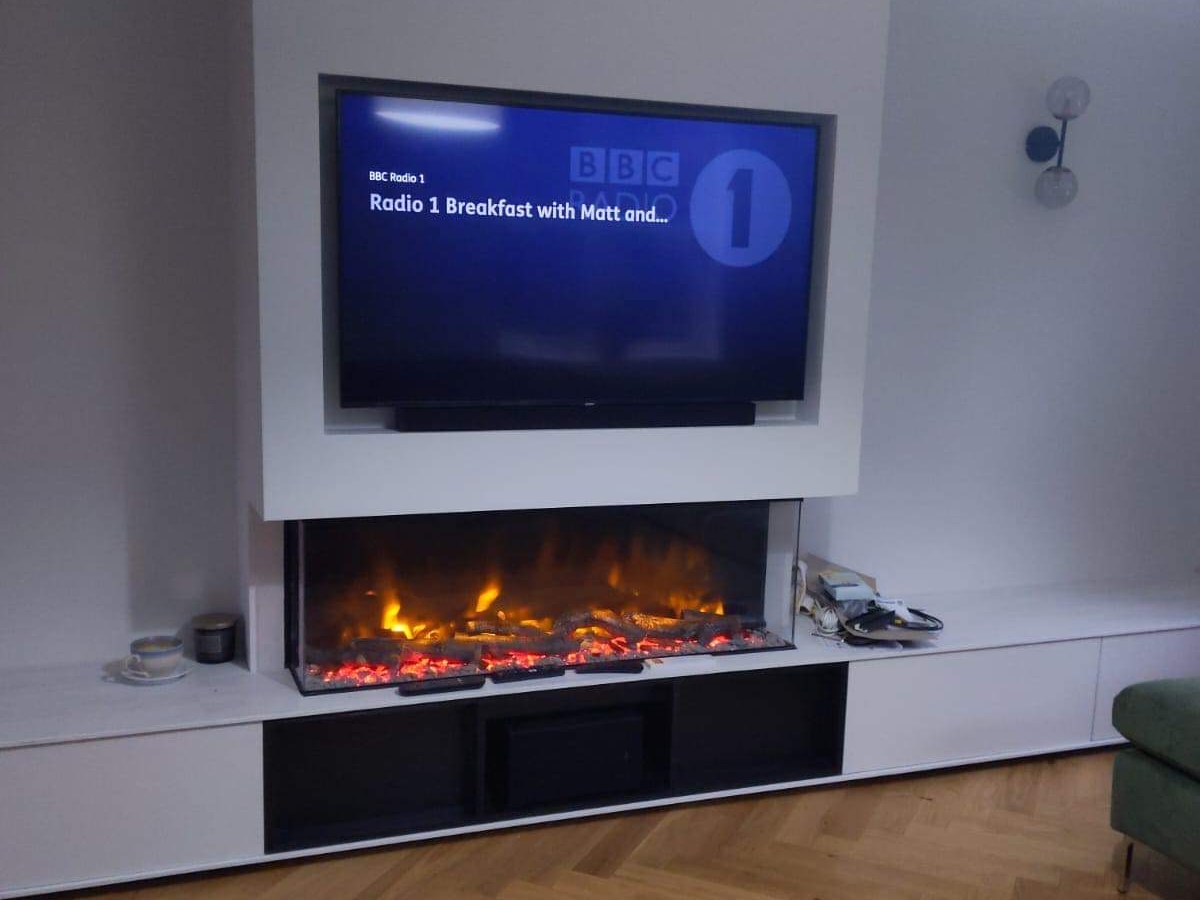
Elgin & Hall Pryzm Arteon
Guide - to find out more about the types of fires you can use with media walls, read our complete guide to media wall fireplaces.
Choosing your media wall television
We’re not AV experts here at Direct Fireplaces, so we’re going to keep this section brief.
When choosing a TV for your media wall, you’ll be presented with a similar choice as your fireplace. Do you want your TV to be ‘embedded’ in the media wall? Or do you want to hang the TV from the media wall?
Whichever type of TV you choose, you’ll need to factor this into the construction of your media wall. For example, if you’re going to embed your TV in the media wall, then this is going to be a slightly bigger job than simply hanging a TV from it as you’ll need to create a recess for the TV to sit in.
We would also strongly recommend checking the weight of your chosen TV. This is because stud walls are not load-bearing walls. As such, your media wall may not be able to support the weight of a particularly large/heavy TV.
If you’re in doubt - speak to a professional builder.
The final point to consider is the TV’s proximity to the fireplace. Whilst electric media wall fireplaces don’t give off vast amounts of heat, it’s important that you check the TV manufacturer’s instructions and warranty regarding heat damage.
If in doubt, speak to an AV specialist who will be able to advise you further.
How to build a media wall with a fireplace
If you’re building a media wall from scratch, then you should first decide whether or not you want to do this job yourself.
Building a stud wall requires a reasonable amount of carpentry skill, whilst installing the television and fireplace may require you to move plug sockets - so, you’ll need to feel confident working with electrics.
In our experience, if you have the slightest doubt about being able to do the job yourself, we’d strongly recommend that you call in a professional builder. It may cost you a little extra, but it could potentially save you some major headaches!
Choosing a location for your media wall
Whether you’re building your media wall yourself or using a builder, you’ll need to choose a location for it.
As the media wall is going to be the main focus of your room - with it hosting both the fireplace and the television - most people will want to place it in a central location e.g. in the middle of the main wall of the living room.
That’s straightforward and a sensible place to put it, but before you commit to the location, you should think about the depth of the media wall (how much it will stick out from the main wall it’s against) and things like viewing angles.
For example, if someone is sitting on a sofa or armchair to the side of the media wall, will they be able to comfortably watch the TV?
Once you’ve established that, you should also check if the wall you’ve chosen has enough plug sockets and how close they are to the media wall. You’re going to need at least two - one for the fire, and one for the TV.
If the plug sockets are some distance from your chosen location of the media wall, then you’re going to have to factor in moving them into the build process (most people will not want long electrical cables trailing across the main wall of their living room).
Measuring up
The next stage is to start taking measurements.
The main thing to consider at this point is the size of the fireplace and the television. The wall is going to have to provide sufficient support for both of these, so you’ll need to ensure that the wall is wide enough to safely accommodate them.
You’ll also have to take into consideration the type of fireplace and television you’re installing.
As we mentioned earlier, the type of fireplace and TV you choose will influence the measurements of your media wall. If you’re going for the sleek ‘hole in the wall’ route, then you’ll need to think about internal dimensions of the cavities in which the TV and fireplace will sit.
If you’re going for a wall-hung fireplace and television, measuring up is easier - but, do be aware of how far they stick out from the media wall once mounted.
Building the stud wall
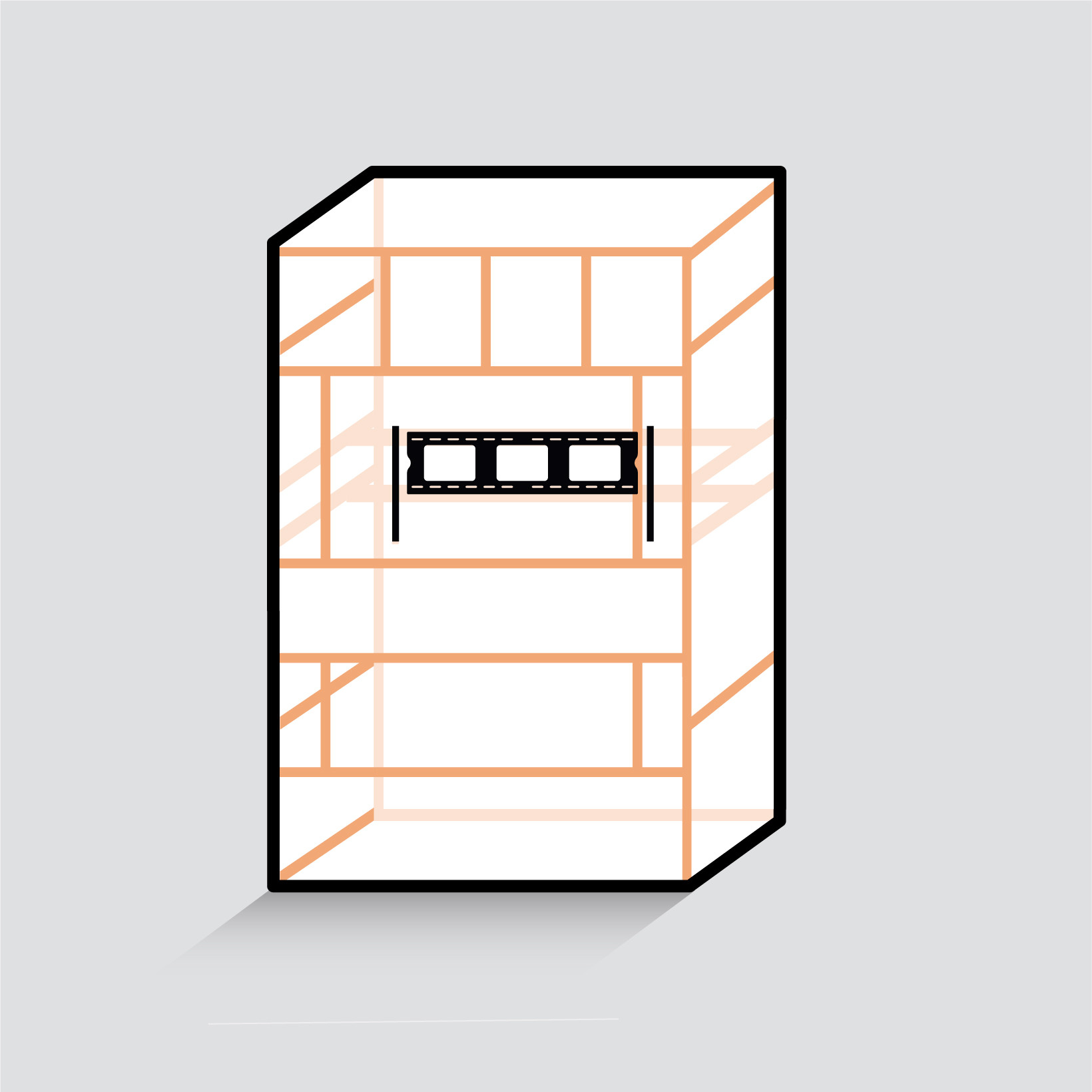
Once you’ve measured everything up, it’ll be time to start building the stud wall.
A stud wall is a wall which is built from a wooden frame. The vertical lengths of wood are the ‘studs’.
If you’re going to be hanging your TV and fireplace on the wall, then it’s the studs that you’ll be screwing them into.
The studs are then braced by a series of horizontal lengths of wood. These are to add rigidity and strength to the media wall, and should not be used to support wall-hung fires or TVs.
Should you be embedding your fireplace and TV into the media wall, then you will need to build cavities or recesses into the wooden stud frame to support them.
It’s important that you carefully measure the depth of these cavities. You want to ensure that once the TV and fireplace have been mounted in the cavities that they are flush with the outer surface of the media wall.
It’s advised that these recesses are built in the same way as the rest of the wall, with studs and supporting cross beams. This is because, depending on the model of TV or fireplace, you’ll need to install brackets within the recesses to support and mount the appliances.
Installing the TV and fireplace (embedded)
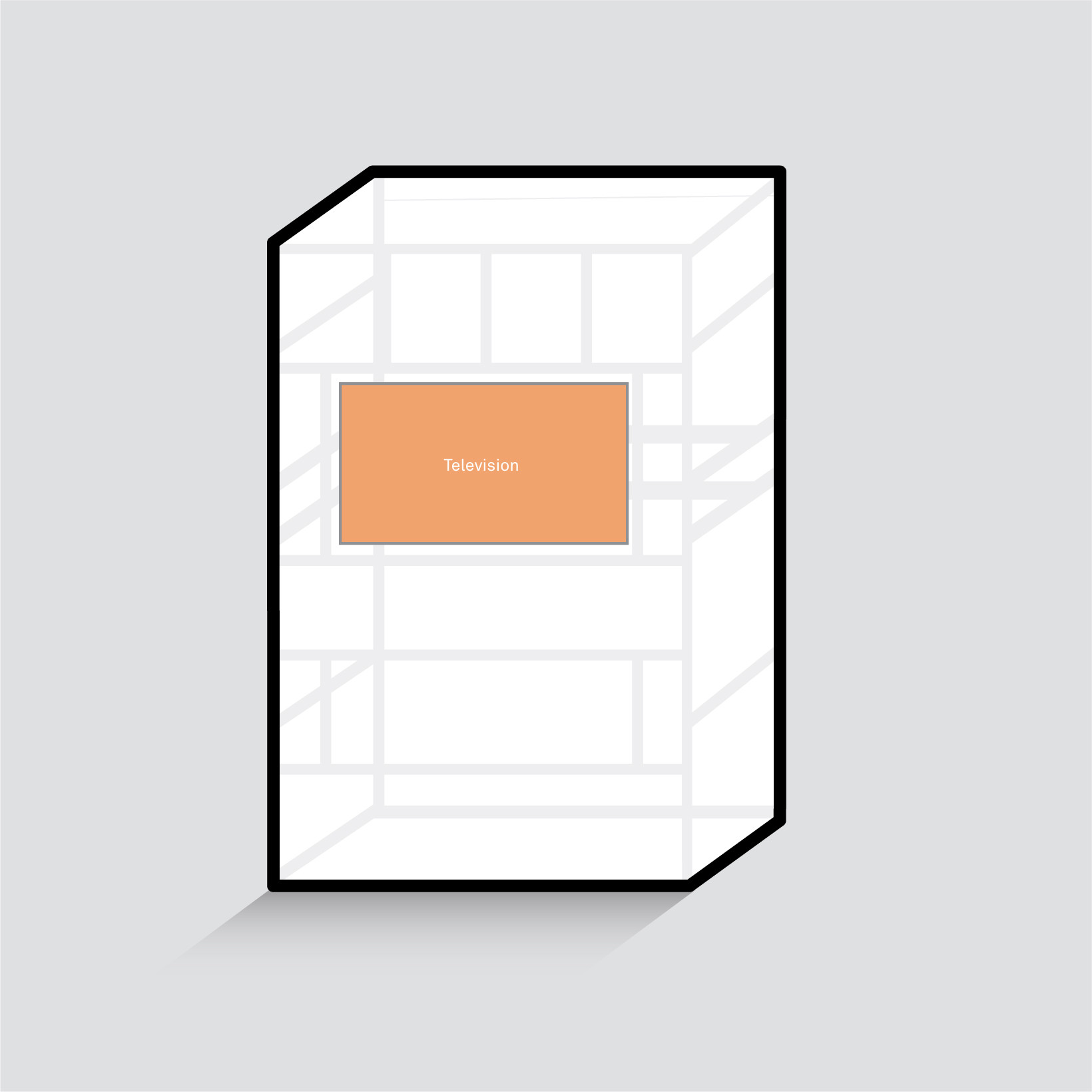
If you’re going to be installing your TV and fireplace in wall-hung configurations, skip this section. We’ll cover wall-hung installations further on in this article.
Once the basic frame and outline of your stud wall has been completed, the next stage is to mount the TV and fireplace (if you’re going to be embedding them in the wall).
In most cases, you’ll need to fit mounting brackets to support the appliances. This is usually a straightforward job and involves drilling into the studs in the recesses.
With the brackets in place, you simply need to hang the fireplace and TV off them.
If you’ve measured correctly, the TV and fireplace should now be flush with the outside surface of the media wall.
The electrics
As we mentioned earlier, it’s important that you’ve given some thought as to the location of the plug sockets you’ll require in relation to the position of the media wall.
You’re going to need at least two plug sockets (one for the fire and one for the TV).
The next steps are down to personal preference.
Some people choose to locate the plug sockets right next to the media wall. They will use nail-in cable clips to route the power cables from each appliance along the inside of the stud wall frame, with the plugs emerging outside of the frame down near the bottom of the media wall.
This option means that you can unplug the TV and fireplace when you want to - but, it does leave the plugs exposed to view (albeit discreetly).
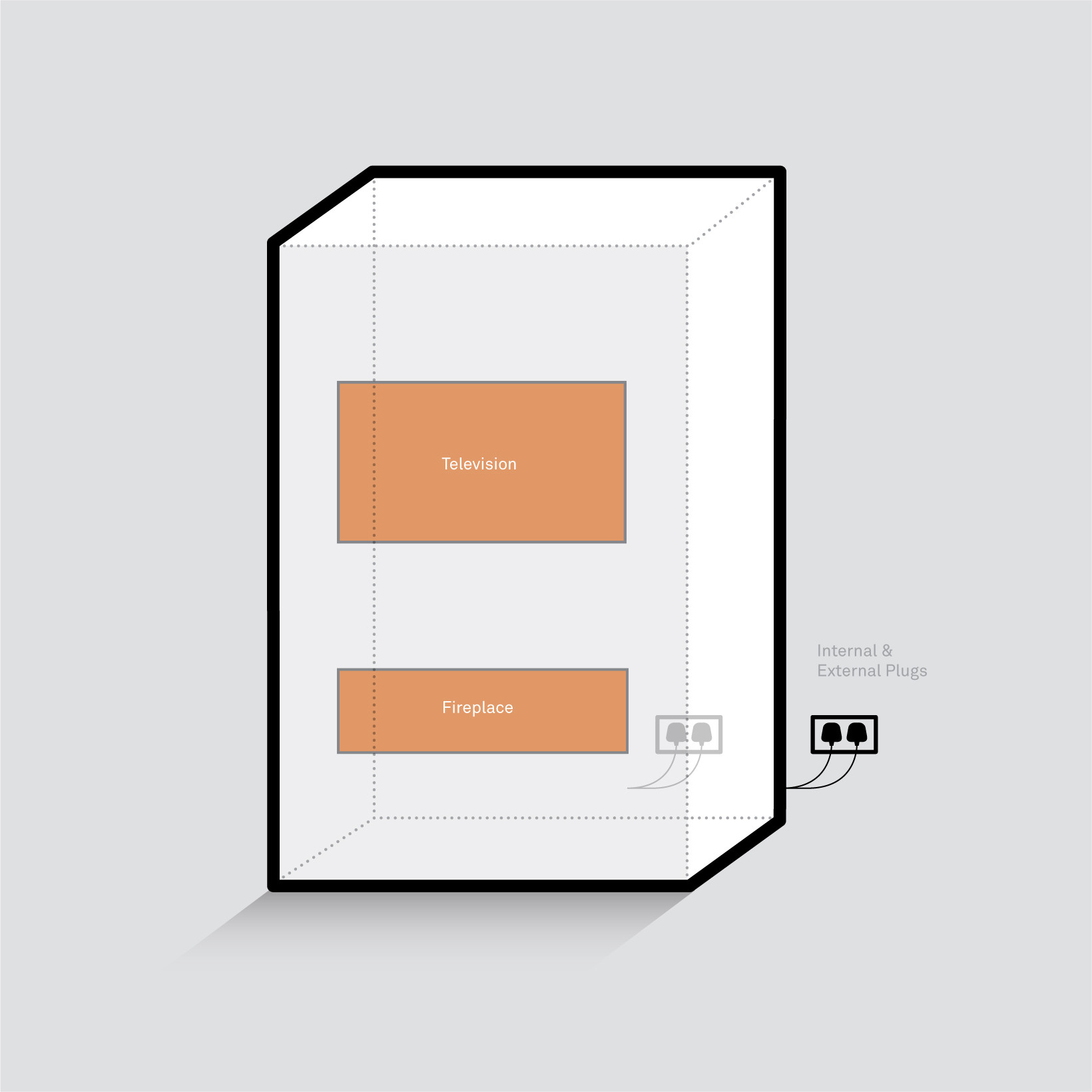
The other alternative involves placing the plug sockets within the media wall itself (either by locating the media wall over existing plug sockets, or moving plug sockets).
Again, the cables from the appliances can be routed along the stud wall frame using nail-in cable clips until they reach the plug sockets. This option means that the plug sockets are completely hidden from view - but it does mean you have to leave the TV and fire permanently plugged in.
Note - with any electrical work such as rewiring or moving plug sockets, we strongly recommend you always use a qualified electrician to carry out the work.
Covering and completing your media wall
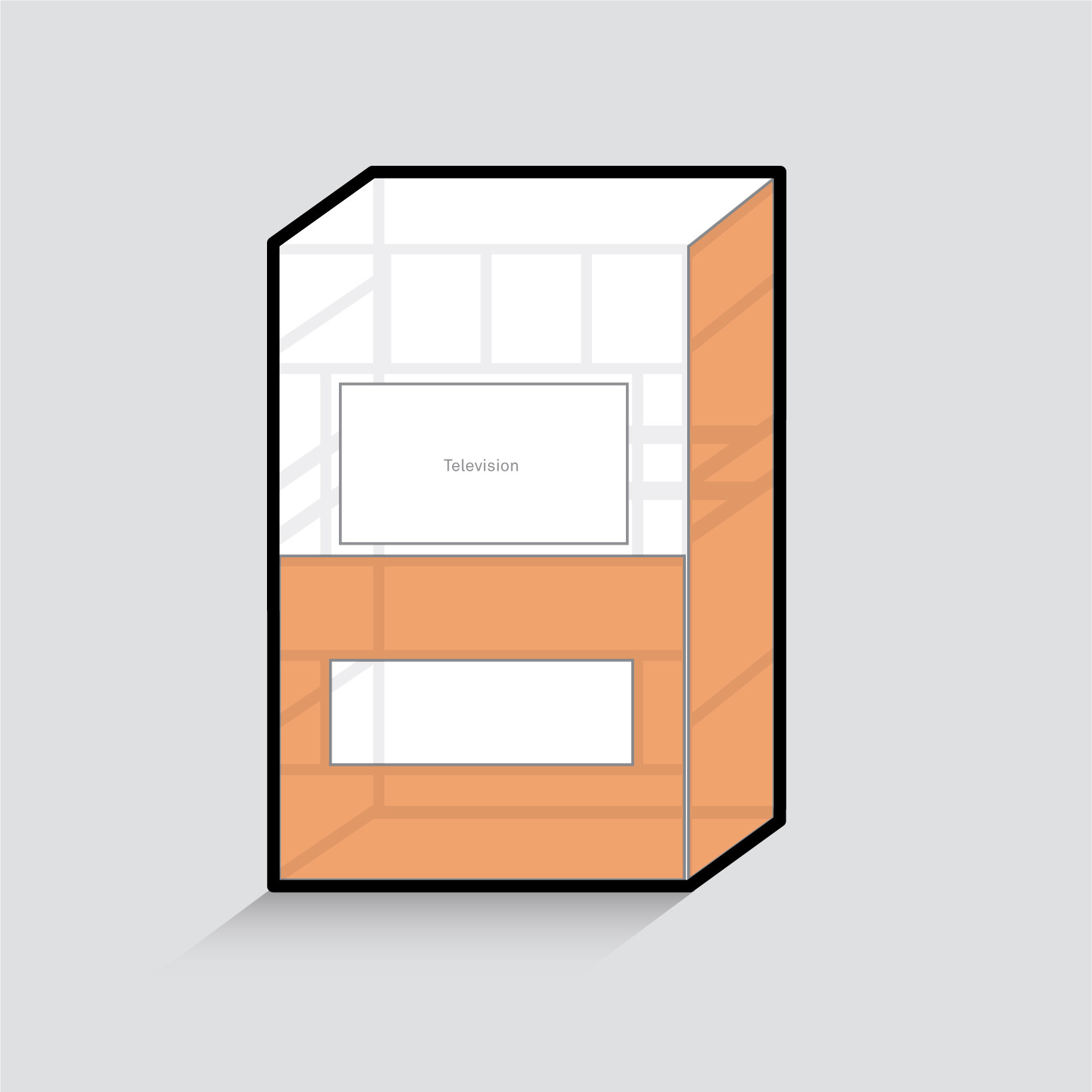
With the main wooden frame of your media wall complete and your fireplace and TV installed, it’s time to add the finishing touches.
If you want to add a smooth finish to your media wall and ensure that it blends in with the other walls in your living room, then we’d recommend using plasterboard to cover the wooden frame.
Plasterboard is available in precut sheets, with a standard sheet of plasterboard measuring 2,400 x 1,200 x 9.mm and costing around £8-10.
Installing it is not a complex job, and involves cutting it to the required size and using a drill to screw it into place. Remember to drill into the studs (the vertical lengths of wood) rather than the horizontal sections of the wooden frame.
Once all of the plasterboard has been fixed in place and your media wall is completely covered, the next step will be to skim the plasterboard.
Skimming the plasterboard will help cover up the screws that have been used to fix the plasterboard in place. It will also create a nice smooth surface which will be perfect for painting.
If you don’t feel confident in your skimming abilities, call in your local plasterer who will be able to do this job for you.
Once this has dried, give your wall a lick of paint and you’ll be ready to start enjoying your new media wall and fireplace!
Installing the TV and fireplace (wall hung)
Should you be installing your TV and fireplace in a wall hung configuration, then you’ll want to do it at this stage (once the skimmed layer on the plasterboard has dried).
Whilst every model of TV and fire differs slightly, they are generally mounted to a wall in one of two ways:
- Using a wall bracket which is screwed into the wall.
- Using special hanging screws which are screwed into the wall.
As you can see, these two installation methods are very similar. They both centre on screwing into the wall.
When it comes to driving screws into your new media wall, it’s vital that you screw directly into the studs. If you miss the studs, you’ll end up making an unsightly hole in the middle of the plasterboard panels…
To avoid doing that, use a stud finding tool. This is a handy device which you can run over the wall. It will beep or alert you once it’s found a stud.
Before you reach for your drill though, you’ll want to carefully measure (using a tape measure and spirit level) and mark where you’ll be positioning your fireplace and TV.
Some wall-hung fires come with templates to help you do this.
You will also need to think about how you wire your fireplace and TV and connect them to your plug sockets.
It is possible to fit plug sockets on stud walls. So one option would be to install new plug sockets directly behind the TV and fireplace. This way, the plugs will be hidden from view. If you want to do this, you’ll need a special electric socket box which is designed for use in stud walls.
As always, if you’ve any doubts about dealing with electricity whatsoever, call in professional help!
Guide - for even more information on how to fit a wall mounted electric fireplace, read our complete guide here.
The finishing touches
Once you’ve followed these steps, your media wall will be pretty much complete!
There are a few finishing touches you may want to add however. For example, some people like to add a skirting board to the bottom of their media wall - so that it is contiguous with the skirting board in the rest of the room.
Others prefer to leave it off, making the media wall stand out from the rest of the room.
If you’re really into your AV and tech, then you may choose to add more features to your media wall such as speakers.
Ultimately, it’s up to you!
The best electric fires to use with media walls
As you can see, creating a media wall with a fireplace in your home isn't the most difficult job in the world.
Sure, it does require some construction skills and knowledge, but the results are more than worth it.
Not only does a media wall create a stunning focal point in your living room, but it can even add to the overall value of your home.
So, do you want to create a media wall in your home? Then below we’ve set out some of the best wall mounted and hole in wall electric fires for media walls below.
The best wall mounted electric fires for media walls
If you’re going to go down the wall mounted (aka the wall hung) route for your media wall, then the electric fires below will be perfect.
Celsi Electriflame VR Basilica Electric Wall Fire

Celsi Electriflame VR Basilica Wall Mounted Electric Fire
If you want a sleek, slimline wall mounted electric fire that gives the appearance of being seamlessly embedded in your media wall, then choose the Celsi Electriflame VR Basilica.
This wall hung electric fire has a truly stunning appearance and is available in either satin champagne or satin silver and features Celsi’s really clever E-VR Flame Projection Technology.
This VR tech is able to create an incredibly realistic flame effect, which when matched with the realistic silver birch log fuel bed, effortlessly makes your room feel comfortable and warm.
OER Alpine Wall Mounted Electric Fire

OER Alpine Wall Mounted Electric Fire
Do you want the fire on your media wall to stand out prominently and become a focal point in its own right? Then something like OER’s Alpine would be an ideal choice.
The Alpine will certainly make a bold addition to a media wall - and thanks to its design offers a shelf on which you can store small items such as lightweight speakers or remote controls for your media wall TV.
The OER Alpine will add a real touch of quality to your media wall as it’s manufactured from real natural materials such as natural oak, porcelain and more.
It’s also has a three-sided fire, so it will add an additional layer of depth and interest to your media wall. It’s also easy to install with the required fixing brackets supplied in the box.
The best hole in the wall electric fires for media walls
Do you want to create a truly sleek media wall with the fire and TV embedded in? In that case, you’ll want a hole in the wall electric fire.
These electric fires are designed to sit within a recess in media walls and sit flush with the front surface of the wall. This creates a sleek, smooth appearance, which many people really enjoy.
Below you’ll find a couple of our most popular hole in the wall electric fires for media walls.
Flare Avella Grande Hole in the Wall Electric Fire

Flare Avella Grande Hole in the Wall Electric Fire
To create a truly sleek, modern looking media wall, choose the Flare Avella Grande hole in the wall electric fire.
Featuring the latest LED technology, the Avella Grande can emulate the shimmering, smouldering effects of a natural flame to an incredible degree of realism.
At 45-inches wide, the Avella Grande certainly lives up to its name.
It’s ideal for media walls that feature a large widescreen TV. Sometimes it can be difficult to find a media wall fireplace that matches the grandest of TVs - but, that’s no problem for the Avella Grande.
The Avella Grande is available in either black nickel or matt black finish, so it’s easy to select the colourway that complements your media wall and TV.
With thermostat controls and the ability to have the LED screen displaying flames with or without the heater running makes the Avella Grande a highly flexible home heating option too.
AGA Rayburn Stratus 100 Extra Slim Hole in the Wall Electric Fire

AGA Rayburn Stratus 100 Extra Slim Hole in the Wall Electric Fire
In the event that you’re constructing a media wall which has a very narrow depth, then you’ll want to select a media wall fireplace such as the AGA Rayburn Stratus 100.
The Stratus 100 has a depth of only 130mm, meaning it’ll fit in even the slimmest of media walls.
But despite being extra slim, the Stratus is still a bold and eye-catching media wall fire, largely thanks to its wide screen front. To add a further element of interest, the flames can be changed to multiple colours. When combined with the crystal fuel bed, it creates a beautiful shimmering fire effect.
The Stratus also has a 1.9kW heat output which is enough to take the chill out of a room, whilst not posing any risk to any TV that happens to be mounted above.
At Direct Fireplaces we’re happy to help!
We understand that when you’re investing in a new fireplace and media wall, you may have some questions before you dive into the project.
And, we’re happy to help!
Our team has decades of experience advising customers on all types of fireplace projects. As the UK’s authority on media wall fireplaces, we are happy to provide you with free information and advice prior to your purchase.
Simply contact us on 0161 516 2395 or email [email protected] and our team will be happy to help!
The home of media wall fires
Direct Fireplaces is the UK’s leading retailer of media wall fireplaces. If you want to pick the very best fire for your media wall, then explore our huge range today.
Aside from being the home of media wall fires, we are also the home of great benefits, such as free mainland UK delivery, 14-day no hassle returns and competitive finance options.
Our partner Direct Heating Services can also handle all your media wall installation needs. Contact them at 07469 792452 or email [email protected] to get your quote.
If you want the very best media wall fireplace, buy it from Direct Fireplaces!
Shop media wall fireplaces at Direct Fireplaces now
For more installation advice, buying guides and information, read the Direct Fireplaces blog…
How to Create the Perfect Media Wall with a Fireplace | What Types of Fires Can You Use in a Media Wall? | Introducing Media Wall Electric Fireplaces and Hole in the Wall Electric Fires
[related_products is_auto_added="1"]admin
Latest posts by admin (see all)
- Electric Fireplace Inserts Buying Guide - March 27, 2023
- What Types of Flueless Fires Are There? - February 23, 2023
- What Are the Best Contemporary Gas Fires? - January 17, 2023







